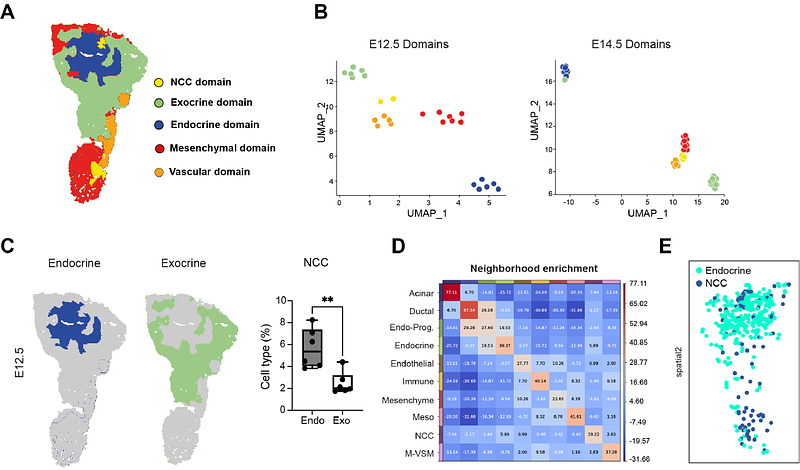Spatially organized cellular communities shape functional tissue architecture in the pancreas

Spatially organized cellular communities shape functional tissue architecture in the pancreas
Torres-Cano, A.; Darrigrand, J.-F.; Herrera-Oropeza, G.; Goss, G.; Willnow, D.; Salowka, A.; Chitnis, D.; Rouault, M.; Vigilante, A.; Spagnoli, F. M.
AbstractOrgan function depends on the precise spatial organization of cells across multiple scales, from individual cells to cellular communities that form specialized local niches and, ultimately, complex higher-order structures. While the identities of individual cell are increasingly well-defined, our understanding of how these diverse cell types are spatially distributed and communicate remains incomplete. In this study, we combine single-cell and spatial transcriptomic analyses to map pancreatic cell populations across space and time, from embryonic development to adult homeostasis in mice. Using these comprehensive maps, we systematically resolve spatial heterogeneity among pancreatic cell types and uncover basic tissue niches, which emerge as epithelial-mesenchymal units. We further characterize these niches functionally in both mouse and human models. We demonstrate that the mesenchymal lineage initially diversifies into various subtypes with specialized supportive roles during embryonic development. However, this complexity gradually diminishes over time, ultimately converging into a limited number of fibroblast sub-types in adult tissue. Our findings shed light on how different progenitor lineages co-develop and organize into structured communities that establish a mature, functional pancreas. This foundational framework could inform strategies for in vitro organogenesis and tissue-engineering in the context of pancreatic diseases.